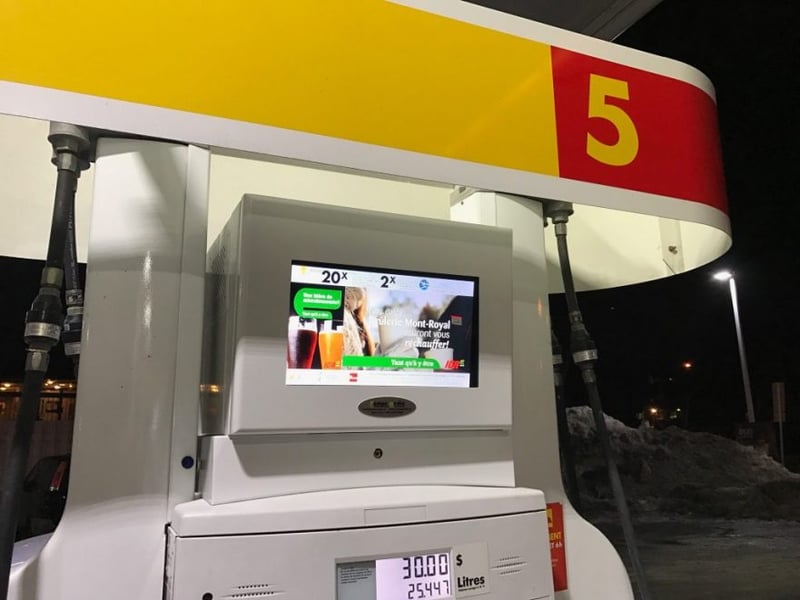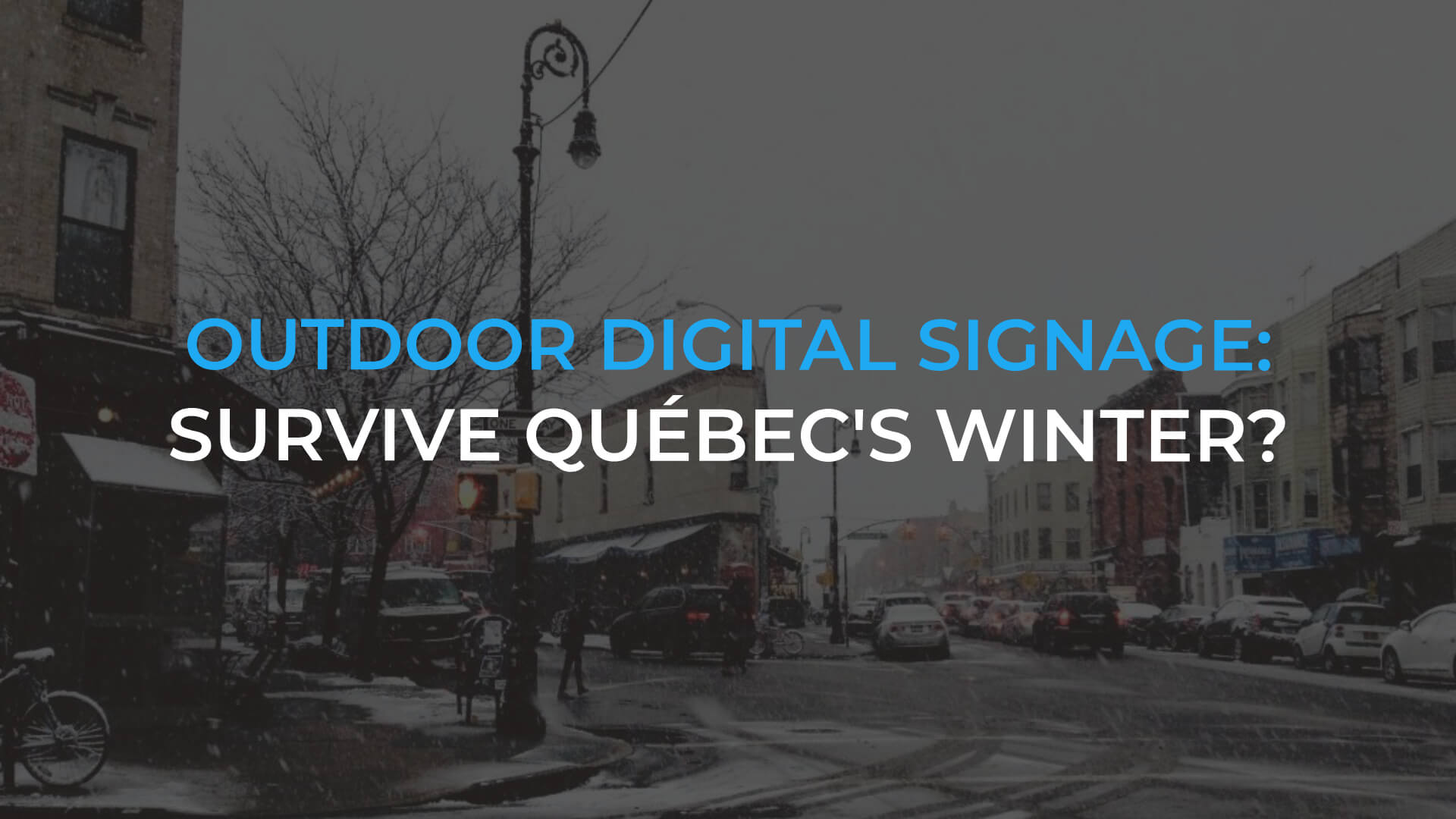Outdoor digital signage is a very effective way to reach a broad audience. During summer, things are simple because of the mild weather conditions which help the screens and the installations function properly. However, several factors can affect your installations during the winter season. For this reason, we decided to write an article to help you understand how outdoor digital signage holds up during the winter season.
1 - Product quality
Quality is the most important factor to take into consideration when buying your screens and installations. Knowing that you will install them in a location where weather conditions are changing and can sometimes be hostile (cold, humidity, extreme heat, etc.), it is important to invest in a good product that can withstand such changes in temperature. We suggest that you seek advice from an expert in the industry who will fully understand your needs and present you with quality products that can withstand the four seasons.

A high quality display has a built-in ventilation system to prevent moisture damage. Outdoor screens installed in Las Vegas (extreme heat conditions, prolonged exposure to the sun) and outdoor screens installed in Québec may seem similar at first sight, but the one located in Québec will have to withstand the harshness of winter and must therefore be heated and better ventilated . A screen designed to operate in extreme conditions will be waterproof and insulated to prevent damages from water, cold, sun exposure, extreme heat and other natural phenomena.

Also, it is important to buy a screen with strong luminance (brightness) so that people looking at its content are able to see what is being broadcast even when the monitor is directly facing powerful sunlight. If your screen is not suitable for the outdoor (but is a quality product), you won’t be able to see the content displayed on the monitor. You can test it with your smartphone or your laptop; you can barely see the content. Note that the minimum recommended brightness for an outdoor screen is 2500 NITS.
2 – Remotely control your screens
Get an operating system that will allow you to control your screens from your computer. This way, you will be able to know immediately when a problem comes up. Most of the time, you can fix a problem directly from your computer. It’s important to know at all times what is happening on your screens and to keep control of it. In addition, you can change the content of your screens from your computer. For example, if your screens are located in a ski resort, you can inform the skiers of the next weather alert.
3 - The installation of a protective housing

To ensure that your screens are well protected outside, you must have a heated and ventilated protective box covering each screen. The protective housing has to be transparent and very rigid as it must resist heat, frost, snow, rain, wind. etc. It will act as a shield for the screen which we want to protect as much possible. Moreover, with such protection, your outdoor digital displays are less likely to be vandalized or stolen. It is better that the protective housing be damaged rather than your screens.
To sum up, if you decide to invest in outdoor digital signage, make sure to do your research beforehand. It is important to take into consideration the orientation of your screen, the level of brightness, the vibrations in the ground, the weather conditions and the risks of vandalism. Also, a very crucial yet often forgotten detail: make sure to have access to electricity and the Internet!
If you have any questions about outdoor digital signage, do not hesitate to contact an expert!
Contact us:
By phone (toll free): 1 800 789-3790 ext: 251
By email : Click here










